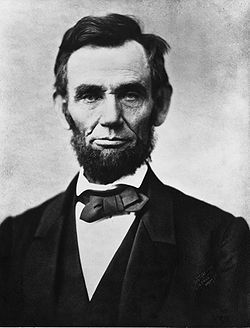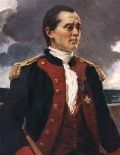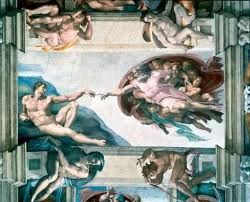Cross posted from The Stars Hollow Gazette
This is your morning Open Thread. Pour your favorite beverage and review the past and comment on the future.
Find the past “On This Day in History” here.
November 12 is the 316th day of the year (317th in leap years) in the Gregorian calendar. There are 49 days remaining until the end of the year.
On this day in 1775, Upon hearing of England’s rejection of the so-called Olive Branch Petition on this day in 1775, Abigail Adams writes to her husband, John:
The intelegance you will receive before this reaches you, will I should think make a plain path, tho a dangerous one for you. I could not join to day in the petitions of our worthy parson, for a reconciliation between our, no longer parent State, but tyrant State, and these Colonies. — Let us seperate, they are unworthy to be our Breathren. Let us renounce them and instead of suplications as formorly for their prosperity and happiness, Let us beseach the almighty to blast their counsels and bring to Nought all their devices.
The previous July, Congress had adopted the Olive Branch Petition, written by John Dickinson, which appealed directly to King George III and expressed hope for reconciliation between the colonies and Great Britain. Dickinson, who hoped desperately to avoid a final break with Britain, phrased colonial opposition to British policy as follows:
“Your Majesty’s Ministers, persevering in their measures, and proceeding to open hostilities for enforcing them, have compelled us to arm in our own defence, and have engaged us in a controversy so peculiarly abhorrent to the affections of your still faithful Colonists, that when we consider whom we must oppose in this contest, and if it continues, what may be the consequences, our own particular misfortunes are accounted by us only as parts of our distress.”
Abigail Adams’ response was a particularly articulate expression of many colonists’ thoughts: Patriots had hoped that Parliament had curtailed colonial rights without the king’s full knowledge, and that the petition would cause him to come to his subjects’ defense. When George III refused to read the petition, Patriots like Adams realized that Parliament was acting with royal knowledge and support. Americans’ patriotic rage was intensified with the January 1776 publication by English-born radical Thomas Paine of Common Sense, an influential pamphlet that attacked the monarchy, which Paine claimed had allowed “crowned ruffians” to “impoverish the nation and set it together by the ears.”


 SS Edmund Fitzgerald (nicknamed “Mighty Fitz,” “The Fitz,” or “The Big Fitz”) was an American Great Lakes freighter launched on June 8, 1958. At the time of its launching, it was one of the first boats to be at or near maximum “St Lawrence Seaway Size” which was 730 feet (220 m) long and 75 feet (23 m) wide. From its launching in 1958 until 1971 the Fitzgerald continued to be one of the largest boats on the Great Lakes.
SS Edmund Fitzgerald (nicknamed “Mighty Fitz,” “The Fitz,” or “The Big Fitz”) was an American Great Lakes freighter launched on June 8, 1958. At the time of its launching, it was one of the first boats to be at or near maximum “St Lawrence Seaway Size” which was 730 feet (220 m) long and 75 feet (23 m) wide. From its launching in 1958 until 1971 the Fitzgerald continued to be one of the largest boats on the Great Lakes. On this day in 1872, fire rips through Boston.
On this day in 1872, fire rips through Boston. 

 The British Egyptologist
The British Egyptologist 
 After departing Brest, Jones successfully executed raids on two forts in England’s Whitehaven Harbor, despite a disgruntled crew more interested in “gain than honor.” Jones then continued to his home territory of Kirkcudbright Bay, Scotland, where he intended to abduct the earl of Selkirk and then exchange him for American sailors held captive by Britain. Although he did not find the earl at home, Jones’ crew was able to steal all his silver, including his wife’s teapot, still containing her breakfast tea. From Scotland, Jones sailed across the Irish Sea to Carrickfergus, where the Ranger captured the HMS Drake after delivering fatal wounds to the British ship’s captain and lieutenant.
After departing Brest, Jones successfully executed raids on two forts in England’s Whitehaven Harbor, despite a disgruntled crew more interested in “gain than honor.” Jones then continued to his home territory of Kirkcudbright Bay, Scotland, where he intended to abduct the earl of Selkirk and then exchange him for American sailors held captive by Britain. Although he did not find the earl at home, Jones’ crew was able to steal all his silver, including his wife’s teapot, still containing her breakfast tea. From Scotland, Jones sailed across the Irish Sea to Carrickfergus, where the Ranger captured the HMS Drake after delivering fatal wounds to the British ship’s captain and lieutenant.